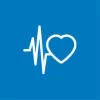Compulsory health insurance and Swiss residents share a love-hate relationship. We all enjoy the peace of mind that comes with almost comprehensive health insurance coverage. At the same time, we hate paying the premiums.
For the young and fit in particular, paying obligatory health insurance premiums sometimes feels like flushing hundred-franc bills down the toilet. Multiply the cost of premiums by a couple of kids, and families can easily end up spending nearly as much on health insurance as they pay for their rental homes.
While most of us won’t likely recover even a fraction of the premiums we pay in premiums by way of insurance benefits within our lifetime, there are people who feel that premiums are too low, and don’t reflect the true cost of the coverage provided.
To help clear the scoreboard, we at moneyland.ch have set out to compare Swiss health insurance with the coverage and costs that come with being insured in other affluent countries.
Here we compare basic Swiss compulsory health insurance coverage to its equivalents in the United States and The Netherlands, to find out where it lacks and where it shines.
1. Health insurance in Switzerland
Health insurance in Switzerland is provided by private insurance companies. However, the federal government sets the benefits, terms and conditions which apply to all obligatory health insurance policies. No matter which obligatory policy you get, benefits and out-of-pocket costs are almost identical (minor differences are explained here).
Swiss health insurance: Coverage
- Diagnosis and treatment of illnesses (by private doctors, hospitals or specialists).
- Hospital stays in a general ward in your canton of residence.
- Hospital stays in a general ward in other cantons (up to your canton’s daily cost limits).
- Emergency medical care throughout Switzerland.
- Prescription medicine.
- Certain over-the-counter medicines.
- Emergency medical care outside of Switzerland (up to double the estimated cost of the same treatment in your canton of residence).
- Rehabilitative treatment as ordered by a doctor (including chiropractors, physiotherapists, home-based care and more).
- Maternity (including prenatal care, birth prep courses, delivery, postnatal examinations, nursing consultation and newborn medical care).
- Immunizations (most important vaccinations are covered).
- Treatment of dental problems caused by accidents or illnesses.
- 50% of the cost of ambulance transportation (maximum 500 francs per year).
- 50% of the cost of emergency medical evacuation (maximum 5000 francs per year).
- Accidents (this coverage can be put on hold if you are covered by occupational accident insurance).
Swiss health insurance: Out-of-pocket costs
- Adults can choose one of 6 deductibles, with the lowest being 300 Swiss francs and the highest being 2500 Swiss francs.
- Children can choose between 7 deductibles, with the lowest being 0 Swiss francs and the highest being 600 Swiss francs.
- A 10% co-insurance payment applies to all medical expenses, up to a maximum of 700 Swiss francs in co-insurance payments per year (after which the insurance covers 100% of expenses).
- For children, the 10% co-insurance payment is limited to 350 Swiss francs per year. Co-insurance for children is limited to a total of 700 francs per year for all children in a family combined, when the family has more than 2 children.
Swiss health insurance: Premiums
While the coverage you get with all Swiss obligatory health insurance policies is the same, there are major differences in premiums charged by different insurance companies.
Your place of residence, whether or not you have occupational accident insurance, and the insurance model you use (standard or managed care) also affect your premiums. Premiums are also determined by your age group (child, young adult, adult). However, unlike voluntary health insurance policies, premiums do not continue to increase with age once you become an adult.
In 2019, the lowest premiums for compulsory health insurance (managed care, with accident coverage) for an adult living in Zurich are 284.90 Swiss francs for a policy with a 2500-franc annual deductible or 413.20 Swiss francs per month for a policy with a 300-franc annual deductible.
An adult living in Geneva would pay 333.20 francs for the cheapest 2500-franc-deductible policy or around 461.50 Swiss francs per month for a policy with a 300-franc deductible.
If your per-capita taxable income is very low, which is often the case with large families, you can apply for premium reductions. These are subsidies paid by cantonal social security schemes. Depending on your place of residence and situations, these subsidies can be as high as 100 francs per person per month, which can drastically reduce the financial burden of compulsory health insurance.
Swiss health insurance: Eligibility
In Switzerland, all health insurance companies are obligated to provide compulsory health insurance to any Swiss resident at standard premium rates. That means your application for insurance coverage cannot be rejected and you will never be charged more than the insurers standard premium for your age group even if you suffer from chronic illnesses.
2. Health insurance in the United States
Editor’s note: Insurance based on the Affordable Care Act (ACA) is in a state of flux, so it is best to look at the information provided here as a basic guide provided for comparison purposes only.
Since the implementation of the Affordable Care Act (popularly known as Obamacare), health insurance has become obligatory in the United States. Up until 2018, anyone who did not take out eligible health insurance coverage had to reckon with a hefty fine. However, this fine will no longer apply from 2019.
If you cannot or prefer not to get a private insurance plan, you have the right to apply for a basic Bronze ACA plan. Obamacare plans are the only plans which are universally available to all residents. The Bronze plan provides the minimum compulsory health insurance required by law, which makes it the closest U.S. equivalent of Swiss compulsory health insurance.
So what does this basic US health insurance policy cover and what does it cost?
US health insurance: Coverage
- Outpatient medical care at a doctor’s practice, clinic, same-day surgery, at home or at a hospice (the last two may be limited to a maximum of 45 days). Outpatient insurance coverage only applies when you use medical service providers within your insurance provider's partner network.
- Emergency medical care (ambulance transportation and emergency care at any hospital – in or out of your insurance network - in the event of a medical emergency).
- Hospital stays (generally limited to hospitals within your insurance provider’s partner network).
- Laboratory services (where these are needed to diagnose a medical condition, injury or illness or to monitor the effects of treatment).
- Maternity (including prenatal care, delivery, postnatal care and newborn care).
- Mental health services and addiction treatment (diagnosis and treatment of mental health conditions or substance abuse disorders. Coverage can be limited to 20 days per year).
- Rehabilitative services and devices (30 visits to chiropractors or physical/occupational therapists per year, 30 speech therapist visits and 30 cardiac or pulmonary rehabilitation visits per year).
- Pediatric services (also covers vaccines and immunizations plus an eye exam, corrective lenses and 2 routine dental exams, each year for those under 19-years-old.
- Prescription medicines.
- Preventive care (cancer screenings, immunizations and certain other preventative measures).
- Chronic disease treatment (asthma, diabetes, cancer, AIDS).
US health insurance: Out-of-pocket costs
The exact deductible and out-of-pocket costs you pay will depend on the insurance company that provides your bronze plan and on which state you reside in.
- While insurance companies arrange their deductibles, co-payment and co-insurance limits differently, all bronze plans have an actuarial value of 60%. That means the insurance company covers 60% of medical expenses, and you as the policyholder cover 40% of expenses yourself – up to a maximum of $7,350 per year (individual) or $14,700 (family) in combined out-of-pocket payments (2018 figures).
- The average annual deductible for bronze health insurance policies in 2018 was US$6002, according to a study by the Henry J. Keiser Family Foundation.
- Even after reaching the limits of your deductible, you may still have to pay a predetermined amount when you visit a specialist, get urgent care, order a lab test or use certain other medical services.
U.S. health insurance: Premiums
What do you pay for a basic Bronze Plan health insurance policy? Surprisingly, the premiums which unsubsidized policyholders pay are not much lower than those which the average Swiss policyholder pays for their obligatory health insurance.
Premiums have risen year on year since the Affordable Care Act was implemented. In 2019, a Bronze plan costs around 421 dollars per month in New York and 259 dollars per month in California.
Policyholders with low income may be eligible for subsidies provided by way of tax credits. Subsidies are based on the income of policyholders in relation to the official poverty level of each state. Individuals earning up to 332% of official poverty levels may be eligible for subsidies, which vary broadly between states.
US health insurance: Eligibility
Before the Affordable Care Act was introduced, insurance companies were free to accept or decline applications as they saw fit. Getting health insurance was difficult for self-employed Americans, and those with chronic illnesses often found it nearly impossible to get coverage.
While insurance companies can choose whether or not they want to offer “Obamacare” plans, the Affordable Care Act mandates that insurers which choose to participate cannot reject people who apply for a Bronze plan.
Health insurance in the Netherlands
In Holland, all residents are required by law to take out a standard health insurance policy. As in Switzerland, the coverage you get with the compulsory standard health insurance is stipulated by the government but provided by private insurance companies.
So what health insurance benefits do you enjoy in Holland, and how much do you pay for them?
Dutch health insurance: Coverage
- Basic outpatient care (visits to a general practitioner and prescribed treatment by specialists).
- Hospital stays in a general ward.
- Emergency medical care.
- Most prescription medicines (medicines must be listed in the Medicines Reimbursement System to be eligible).
- Some maternity costs (midwife, home delivery, prenatal and postnatal care, 2 ultrasounds. Hospital delivery and maternity care is not covered unless it is deemed medically necessary).
- Ambulance costs and costs of transport.
- Rehabilitation care (limited physiotherapy/rehabilitation, speech therapy, occupational therapy and dietary advice).
- Dental care for children and youths (up to the age of 18).
- Children under 18 are covered by your insurance policy (the mandatory deductible doesn’t apply to those under 18 years old).
- Hearing aids for children (up to 18 years old).
- Sports medicine.
- First 12 treatment sessions for arthritis in hip or knee joints.
- Transport to and from immune therapy treatment sessions for cancer patients, within certain limits.
Dutch health insurance: Out-of-pocket costs
In 2018, a minimum annual deductible of € 385 applies to obligatory health insurance policies. This can be extended to a maximum deductible of € 885.
Dutch health insurance: Premiums
The premium for standard health insurance is set by the Dutch government, and therefore is identical no matter which insurance provider issues your policy. However, insurance companies typically bundle standard health insurance with additional benefits at an added cost, so the premiums you actually pay can vary between insurers.
- In 2019, the cheapest premium for a standard health insurance policy comes to around € 102 per month for a policy with the minimum deductible of € 385. Choosing the highest available deductible of €885 cuts the premium to around € 80 per month.
- Your age and health can affect the premiums you pay. However, insurers are obliged to provide the standard, compulsory portion of health insurance coverage at the government-mandated nominal premium (or lower).
- In addition to premiums, all employed residents pay a percentage of their income as a contribution towards the cost of health insurance. In 2018, this contribution comes to 6.90% for employees and 5.65% for unemployed individuals. There is a cap on the income which is subject to this levy (income up to € 53.697 in 2018).
Those with a very low income are usually eligible for a government subsidy towards covering the cost of health insurance. In 2018, individuals with annual income of € 27.857 or less and families with annual income of €35.116 or less are entitled to subsidies.
Dutch health insurance: Eligibility
Every Dutch citizen or long-term resident is eligible for basic, compulsory health insurance coverage. As in Switzerland, health insurance companies operating in Holland cannot deny any applicant a compulsory standard insurance policy. However, they are free to deny supplementary insurance coverage.
The verdict:
It’s fair to say that, while Swiss residents do pay fairly high premiums, the cost of health insurance in Switzerland actually compares favorably with what’s available in the US and the Netherlands, among other countries.
This is especially true when you consider the fairly comprehensive coverage provided by Swiss obligatory health insurance. Although dental work is not covered (as it is in the Netherlands, to some extent), a basic Swiss policy provides solid coverage both in Switzerland and abroad.
Unlike the US, where high out-of-pocket costs are common on health insurance policies, Swiss policyholders pay relatively little towards medical expenses out of their own pocket.
If you combine the health insurance premiums charged by Dutch insurance companies with the substantial financial contributions to healthcare which are levied on income, the sum of what the average resident of Holland pays for standard health insurance is similar to what the average Swiss adult pays for their health insurance.
While countries like Denmark and Sweden offer state-funded healthcare, residents pay for these services in the way of high taxes and arguably less-efficient healthcare systems.
In Germany, premiums for obligatory health insurance are equal to 14.6% of your income. 7.3% is deducted directly from your salary, while your employer pays the remaining 7.3%. This is beneficial to low earners, but high earners can pay very heavy premiums.
Japan has a government-subsidized national health insurance scheme, although private health insurance (particularly employer-sponsored coverage) is widely used. Not all Japanese hospitals participate in the national health insurance scheme. Premiums are calculated based on your income, property, number of dependents and age, so they can vary in a big way. Those covered by national health insurance are still expected to pay 30% of total cost of hospital care out of their own pocket, and coverage does not apply to medical care outside of Japan.
Taking all factors into account, it is fair to say that Swiss health insurance performs relatively well in the cost-to-value arena. While premiums are high (and climbing), broad coverage and low out-of-pocket costs mean that most Swiss do not need major healthcare budgets in addition to what they pay in health insurance premiums.
Last update: November 2018
More information:
Swiss compulsory health insurance comparison
Swiss supplementary health insurance comparison
Swiss hospital health insurance comparison
Guide to budget health insurance in Switzerland
Swiss Health Insurance: 16 Costs Covered by Your Compulsory Policy















